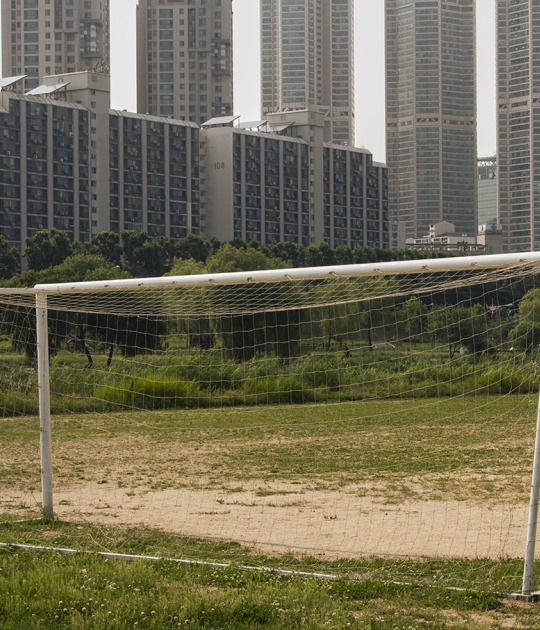In the book "Miradas cruzadas: la Casa Carvajal / Crossed Looks: the Carvajal House" (Ediciones Asimétricas), Cristina Rodríguez de Acuña Martínez proposes an extraordinary journey of images and texts through the house that Javier Carvajal –one of the great Spanish architects–, designed and built for he and his family in the mid-sixties, in Somosaguas, Madrid.
Two decades later, this building, a symbol of the best Brutalist architecture in the country, becomes the photographer's family home. Vitra Showroom Madrid shows a wide selection of originals that have been the basis of the publication. The images reflect a look at the architectural space and the sensations it arouses.
Rodríguez de Acuña wanted to show what she always sensed about this unique place, where she moved to live with her parents and siblings in 1996 and which had received, among other awards, the Best European Architecture of 1968 from the University of Hannover. Her memories, in the form of hundreds of photographs and texts, evoke her experiences in an exceptional space.
The book also collects reflections from Carvajal's followers and disciples such as Ignacio Vicens, Alberto Campo Baeza or Ana Espinosa García-Valdecasas. «They helped me better understand the space and give my sensations a name," explains the photographer, who has tirelessly portrayed the concrete walls, the patios, the changing light and the endless tours of the interior of the Casa Carvajal. "A house that functions as a container for nature,» he says.
The architect Campo Baeza writes «if Paul Valert in his Eupalinos said that there were silent architectures, architectures that speak and architectures that sing, this Casa Carvajal in Somosaguas sings, sings its own and most beautiful song.» And he adds: «And if I had to choose one of his works, and look how difficult it is! I would stay with his house in Somosaguas. A house that made it more difficult for the client, for himself.»
Ignacio Vicens y Hualde comments on the house: «It expresses its expressive qualities, shaping masterfully articulated, flowing and extremely complex spaces. Take advantage of the contrast between its heaviness and the risky overhangs that deny it.»
The house was also the protagonist of one of the great dramas of Spanish cinema, La madriguera (1969), by Carlos Saura, in which a young Geraldine Chaplin initiates a complex relationship with the spaces and architecture of the house.
Two decades later, this building, a symbol of the best Brutalist architecture in the country, becomes the photographer's family home. Vitra Showroom Madrid shows a wide selection of originals that have been the basis of the publication. The images reflect a look at the architectural space and the sensations it arouses.
Rodríguez de Acuña wanted to show what she always sensed about this unique place, where she moved to live with her parents and siblings in 1996 and which had received, among other awards, the Best European Architecture of 1968 from the University of Hannover. Her memories, in the form of hundreds of photographs and texts, evoke her experiences in an exceptional space.
The book also collects reflections from Carvajal's followers and disciples such as Ignacio Vicens, Alberto Campo Baeza or Ana Espinosa García-Valdecasas. «They helped me better understand the space and give my sensations a name," explains the photographer, who has tirelessly portrayed the concrete walls, the patios, the changing light and the endless tours of the interior of the Casa Carvajal. "A house that functions as a container for nature,» he says.
The architect Campo Baeza writes «if Paul Valert in his Eupalinos said that there were silent architectures, architectures that speak and architectures that sing, this Casa Carvajal in Somosaguas sings, sings its own and most beautiful song.» And he adds: «And if I had to choose one of his works, and look how difficult it is! I would stay with his house in Somosaguas. A house that made it more difficult for the client, for himself.»
Ignacio Vicens y Hualde comments on the house: «It expresses its expressive qualities, shaping masterfully articulated, flowing and extremely complex spaces. Take advantage of the contrast between its heaviness and the risky overhangs that deny it.»
The house was also the protagonist of one of the great dramas of Spanish cinema, La madriguera (1969), by Carlos Saura, in which a young Geraldine Chaplin initiates a complex relationship with the spaces and architecture of the house.








































